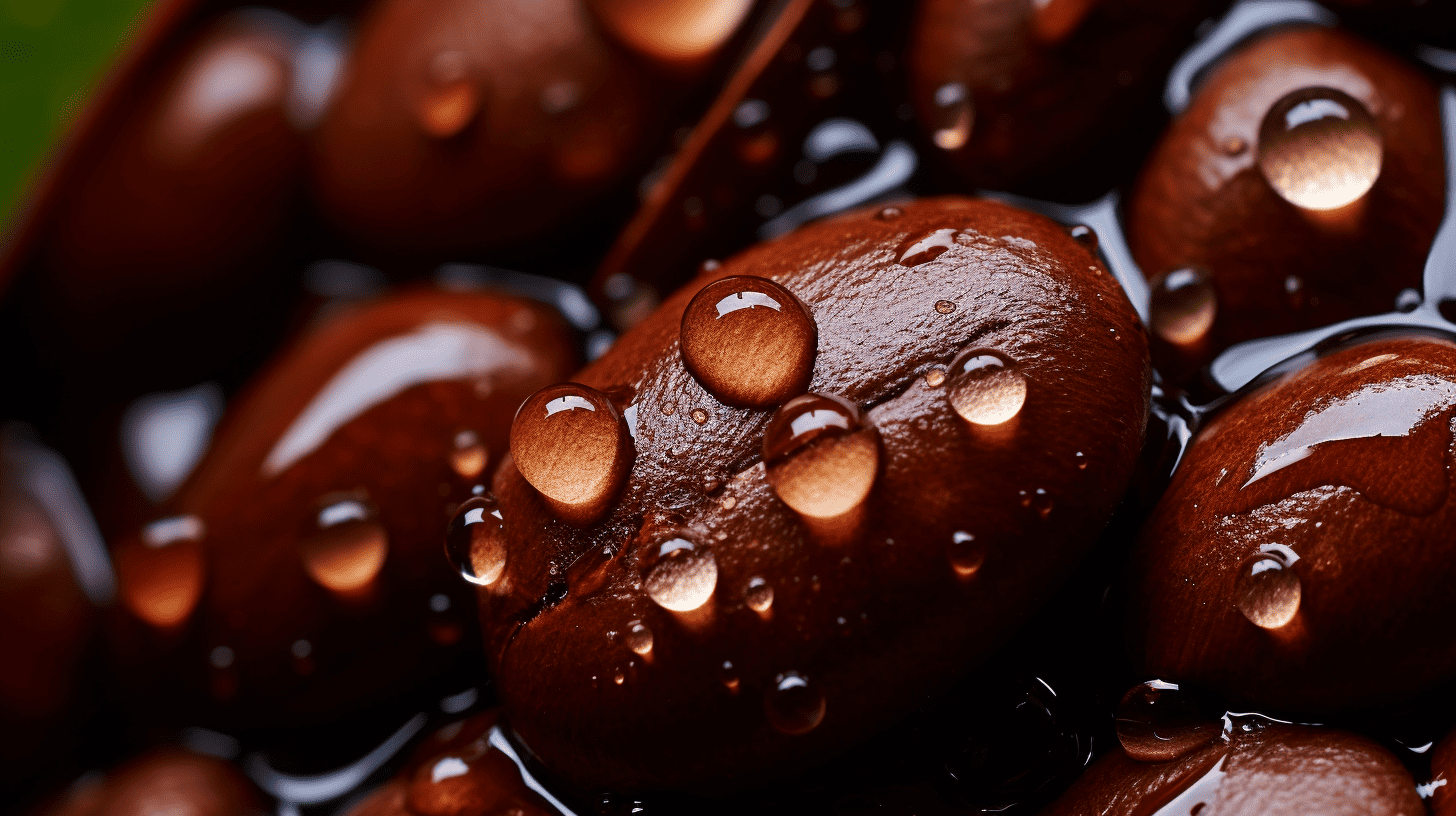Take a sip of Italy’s rich coffee culture as we dive into the fascinating history of the Moka Express. This beloved and iconic stovetop espresso maker revolutionized how Italians enjoyed their home coffee.
Born from the ingenuity of Alfonso Bialetti in 1933, this timeless design has made its mark not just in Italian households but globally. So grab your favorite cup of joe and join us on a captivating journey through time, innovation, and tradition as we explore how this little aluminum contraption became synonymous with authentic Italian espresso.
Key Takeaways
- The Moka Express was invented in 1933 by Alfonso Bialetti’s engineer, Luigi de Ponti, with the aim of simplifying espresso-making and allowing Italians to enjoy it at home.
- Its iconic octagonal shape and aluminum design have undergone various updates while maintaining its signature style and delivering a premium quality coffee taste.
- The Moka Express plays a vital role in Italian coffee culture. It provides a way for people to connect with friends and family members over coffee while enjoying a café-quality espresso at home.
- Regular maintenance is essential to ensure consistent performance, quality taste, and longevity for this iconic Italian coffee maker that continues to be globally popular today due to its ease-of-use for homebrewing enthusiasts who prefer authenticity over convenience.
The Origin And Invention Of The Moka Express
Luigi de Ponti, an engineer for Alfonso Bialetti’s aluminum manufacturing company, is credited with inventing the Moka Express around 1933 after being inspired by other coffee brewing methods of the time.
The Story Behind Alfonso Bialetti’s Invention
In the early 20th century, Italian engineer Alfonso Bialetti ran a successful aluminum manufacturing workshop. His expertise in metallurgy and engineering provided the foundation for what would eventually become his most innovative creation—the Moka Express.
Translating this concept into coffee-making, Bialetti saw the potential for simplifying the intricate process of espresso brewing while allowing people to enjoy it in their homes.
He enlisted Luigi de Ponti’s help, who played a pivotal role in transforming Bialetti’s idea into reality around 1933.
The Moka Express became synonymous with Italian coffee culture, thanks to painstaking efforts made by Alfonso and his son Renato—who skillfully marketed the product after World War II.
The Development Of The Moka Express Design
As an Italian coffee icon, the Moka Express has come a long way in design since its invention in the early 1900s. The original aluminum chamber and filter plate have undergone numerous changes to make brewing coffee at home more accessible and more convenient for everyone.
Another significant change was made by his son Renato Bialetti, who introduced the octagonal shape we see today on every Moka Express. He believed this unique look represented Italy’s artistic heritage and could become a hallmark of quality craftsmanship.
Despite these updates, what makes the Moka Express so timeless is its ability to keep things simple while still producing rich espresso shots with ease.
Current Day Moka Express
Video Summary of the Moka Express:
- The Bialetti Moka Express is widely regarded as one of the most iconic coffee brewers ever created.
- The Bialetti Moka Express was invented in 1933, marking a significant milestone for the Bialetti coffee company.
- This coffee maker uses steam to force water through coffee grounds, a brewing method that was innovative for its time.
- Often mislabeled as an espresso maker, the Bialetti Moka Express actually brews a distinct type of coffee.
- Bialetti has sold an estimated 200 to 300 million Moka Express brewers throughout the years, affirming its immense success.
- Despite recent financial challenges faced by Bialetti, the Moka Express’s quality and design promise a lasting presence in the coffee brewing industry.
- An upcoming video series will delve into the Bialetti Moka Express and its optimum brewing technique, featuring experiments and giveaways.
- There is a book detailing the evolution of coffee makers, which, although pricey, offers an intriguing journey through coffee brewing history.
The Moka Express In Italian Coffee Culture
The Moka Express is an iconic symbol of Italian coffee culture, with its unique design and widespread popularity in Italy. Discover how the beloved stovetop coffee maker has become a daily ritual for many Italians and how it plays an important role in their lives today.
Iconic Design And Widespread Popularity In Italy
As the Moka Express began to take off in Italy, it quickly became recognized for its iconic design and widespread popularity. The sleek aluminum body, signature octagonal shape, and distinctive top knob soon became a fixture in Italian homes.
Part of what made the Moka Express so appealing was that it offered Italians a new and original taste that wasn’t available with other coffee brewing methods. And because it could be used on any stovetop, home-brewing espresso suddenly became easier and more accessible than ever before.
For many Italians, enjoying a cup of coffee from their Moka Express became an integral part of daily life – not just as a beverage but also as part of socializing and connecting with others.
The Role Of The Moka In Italian Daily Life
For Italians, coffee is much more than a simple drink. It’s an integral part of their daily life and culture. The Moka Express has played a significant role in Italian coffee culture since its invention in the 1930s.
Today, it remains one of Italy’s most beloved icons.
The Moka pot allows Italians to enjoy café-quality espresso at home without going to a café. This is important because cafes are social gathering places where people can connect with friends and family over coffee.
In addition to being quick and convenient, using a Moka pot also provides better-tasting coffee than instant or drip brews.
Evolution Of The Moka Express
The Moka Express changed design and materials, adapting to new technologies and consumer preferences.
Changes In Design And Materials
Over the years, the Moka Express has undergone various changes in design and the materials used to make it. Here are some of the changes that have occurred:
– Initially, the Moka Express was made of aluminum, which was prevalent in Italy during those times.
– In 1953, Bialetti added a safety valve on top of the coffee maker to prevent an explosion due to excessive pressure.
– In 1968, Bialetti introduced electric versions of the Moka Express to cater to changing lifestyle needs.
– In 1986, Bialetti launched a new series of Moka Express named “Nuova” with improved sealing gaskets and better ergonomics.
– In 2004, Bialetti released “Dama,” which included an improved ergonomic handle and long-lasting heat resistance handles.
– In recent years, Bialetti also began producing stainless steel versions of their iconic Moka Express coffee makers.
These changes reflect how innovation and customer demand drive product evolution. The Italian coffee icon continues to adapt while maintaining its signature style and delivering a premium quality coffee taste.
Impact On The Global Coffee Market
The Moka Express is not only an iconic piece of Italian culture but has also significantly impacted the global coffee market. Its popularity in Italy spurred a wave of interest in traditional stovetop coffee makers around the world.
As more people began to appreciate the unique taste and brewing method of the Moka Express, other manufacturers started producing their own versions using different materials like stainless steel and copper.
Thanks to its widespread use and recognition, Bialetti expanded its operations globally, making it one of the most successful home appliance brands worldwide. The Moka Express remains popular today due to its ease-of-use for homebrewing enthusiasts who prefer authenticity over convenience.
Using The Moka Express: A Step-by-Step Guide
Brewing coffee with the Moka Express is easy and quick, making it a popular choice for many coffee lovers. In this section, we will provide a step-by-step guide on using the Moka Express to make a delicious cup of coffee.
Tips And Tricks For Brewing Perfect Coffee With The Moka Express
Brewing coffee with the Moka Express is a simple yet precise process. Here are some tips and tricks to ensure you brew the perfect cup every time:
1. Use fresh, high-quality coffee beans. Grinding them just before brewing will allow for maximum flavor extraction.
2. Fill the water chamber of the Moka Express with freshly filtered water just below the safety valve. Ensure that there are no air bubbles.
3. Add the ground coffee into the filter basket without over-filling it and level it off with your finger.
4. Screw on the top chamber of the Moka Express tight enough to prevent any steam from escaping but not too much that it is difficult to unscrew when done.
5. Place the Moka Express on low-medium heat and wait until you hear bubbling noises, this signals that coffee is starting to percolate up to the top chamber.
6. Lift off from heat once you notice foam rising, indicating that all water has been forced up through grounded coffee.
7. Rinse immediately under cool water to stop brewing process and avoid over-extraction/bitterness caused by overheating or unnecessary contact with hot metal.
8. Serve in preheated cups for maximum enjoyment.
By following these steps and using quality ingredients, your Moka Express can produce a delicious, full-bodied espresso – a true Italian treat!
Maintenance And Care Of The Moka Express
Taking good care of your Moka Express will ensure that it provides you with delicious coffee for years to come. Here are some tips on how to maintain and care for your coffee maker:
1. Clean the Moka Express after every use.
2. Disassemble the Moka Express and wash all parts with warm, soapy water.
3. Dry all parts thoroughly before reassembling.
4. Do not use abrasive cleaners or scrubbers on the Moka Express as they can damage the aluminum and affect the taste of your coffee.
5. Replace the gasket and funnel when they show signs of wear or tear (usually every 6 months).
6. Store your Moka Express in a dry place away from direct sunlight to prevent discoloration and rust.
7. Avoid using dishwasher to clean the Moka Express because it can cause discoloration and damage aluminum.
Taking proper care of your Moka Express is essential for ensuring consistent performance, quality taste, and longevity for this iconic Italian coffee maker.
The Legacy And Continued Popularity Of The Moka Express
The Moka Express continues to be a beloved icon of Italian coffee culture, and its unique design and brewing method have made it popular worldwide.
Symbol Of Italian Innovation And Tradition
For many Italians and coffee lovers worldwide, the Moka Express is not just a coffee maker. It is an iconic symbol of Italian innovation and tradition. The aluminum stovetop brewer has been a fixture in Italian homes since its invention in 1933 by Alfonso Bialetti, revolutionizing the way Italians enjoyed coffee at home.
Undoubtedly, part of this appeal lies in the Moka Express’s unique design and brewing method, resulting in rich espresso-like shots with a distinct flavor profile different from traditional espresso machines.
But it is also about how integral the Moka has become to everyday Italian life- from morning rituals to afternoon breaks, gathered around tables with friends or alone- everyone seems to have their own experience with this classic pot that could as easily belong on display as it does on stovetops today.
The Moka Express’s Global Reach And Ongoing Popularity
As a symbol of Italian innovation and tradition, the Moka Express has made its way around the globe since it was first introduced in 1933. Today, you can find this iconic stovetop coffee maker in households across Europe, South America, North America and beyond.
Its popularity shows no signs of slowing down as more people embrace home brewing and specialty coffee culture.
Part of what makes the Moka so beloved is its straightforward design that efficiently brews espresso-style coffee. It’s also durable and affordable compared to other espresso makers, making it accessible to many people who want authentic Italian coffee without breaking their budget.
Which is More Effective for Boosting Productivity: Coffee or Energy Drinks?
Boost productivity with coffee and energy drinks. Both options can give you a quick jolt, but coffee provides a more sustainable and consistent energy boost. It contains caffeine that stimulates alertness and focus, enhancing cognitive function. Energy drinks, on the other hand, may lead to crashes and dependency due to added sugar and artificial ingredients.
Conclusion
In conclusion, the Moka Express is not just a coffee maker but an integral part of Italian culture and tradition. From its humble beginnings in 1933 to becoming a worldwide sensation, the Moka Express has come a long way.
It’s iconic design and innovative brewing method have made it one of Italy’s most well-known inventions. As an SEO copywriter, I hope this brief history has given you insights into this beloved icon that continues to be popular today.
FAQs on The History of the Moka Express:
1. What is the Moka Express, and where did it originate from?
The Moka Express is a coffee maker invented in Italy in 1933 by Alfonso Bialetti. It quickly became popular and an iconic symbol of Italian coffee culture.
2. How does the Moka Express work to make coffee?
The Moka Express uses steam pressure to force water through finely-ground coffee beans, producing rich and flavorful espresso-style coffee.
3. Why has the Moka Express remained so popular over time?
The popularity of the Moka Express can be attributed to its simple yet effective design, ability to produce great-tasting coffee quickly and easily, and affordability compared to more expensive espresso machines.
4. Are there any maintenance tips for keeping my Moka Express in good condition?
To keep your Moka Express working properly, it’s important to clean it regularly with hot water (without soap) after each use. Additionally, you may need to replace the rubber gasket or filter screen occasionally depending on usage frequency and wear-and-tear.





Leave a Reply